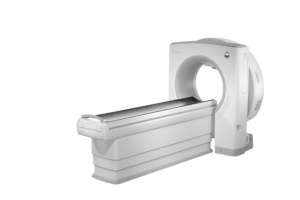GE Healthcare unveils MyoSPECT cardiac-dedicated nuclear medicine scanner
GE Healthcare has unveiled MyoSPECT, a next-generation cardiac-dedicated nuclear medicine scanner with extended field-of-view processing and new automated workflow features for a fast, comfortable exam experience.
Built with the company’s exclusive Alcyone technology and CZT module design, MyoSPECT offers an exceptional view of cardiac anatomy and pathology to help clinicians determine the right course of treatment for patients.
MyoSPECT offers a wider table and 76 percent increase in field-of-view volume, providing clinicians greater positioning flexibility to help accommodate more patients, including those who may be too weak to sit up through an entire exam or others with high body mass indexes.
Combined with the excellent energy and spatial resolution of GE Healthcare’s compact CZT detector technology and novel multi-pinhole collimator design, these features create a tomographic imaging arc of the heart with motionless detectors, so every detector focuses on the heart simultaneously. The result is a complete picture of the heart’s anatomy and pathology for clinicians.
Recognizing that many healthcare systems today are challenged to maintain quality across a wide range of patient and exam types, MyoSPECT also includes several new automated features to help expedite workflows and make it easy to achieve quality results consistently.
The system’s new Smart Positioning solution offers scan positioning prompts and extended field-of-view recommendations to optimize patient positioning. MyoSPECT leverages device-less Alcyone Motion Detection and Correction on Xeleris – GE Healthcare’s processing and review solution – to generate images without motion to view cardiac anatomy and pathology with fewer artifacts and great clarity. The system also includes SPECT Flow, which combines dynamic acquisition on MyoSPECT with coronary flow reserve (CFR) and absolute myocardial blood flow, should clinicians wish to use an external CT for attenuation correction. This process delivers valuable insight into each patient’s blood flow for true dynamic cardiac imaging and great diagnostic confidence.
The system offers clinicians two options for attenuation correction and evaluation – both of which have the added benefit of excellent CZT resolution:
- Correct attenuation by combining perfusion images with separate CT images on Xeleris; or
- Evaluate attenuation artifacts by imaging both prone and supine positions without additional radiation exposure since MyoSPECT uses a table for patient positioning.


